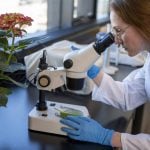According to research by Ipsos-Reid on behalf of Agricore United, many western Canadian grain producers may not be spending enough time scouting their fields during the growing season.
The research also suggests that when growers do scout, they look primarily for weeds and do not pay enough attention to other yield robbers such as insects and diseases.
In March 2005, Ipsos-Reid asked growers across the Prairies to estimate the number of hours they spend scouting crops. The survey shows that the number of hours varies considerably. For an 80 acre canola field, the average grower spends 6.5 hours scouting. However, 46 percent of growers spent two hours or less scouting the same size field.
Read Also

VIDEO: Ag in Motion documentary launches second season
The second season of the the Western Producer’s documentary series about Ag in Motion launched Oct. 8.
Denise Maurice, Agricore United’s crop protection technical development manager, said an experienced field scout will take at least three hours per 80 acre field to effectively look for and diagnose weed, insect and disease problems.
“Growers should take the time to scout effectively. There’s a great return on that investment when you are able to diagnose a problem and manage it effectively to eliminate or reduce crop yield loss,” Maurice said.
If growers have only limited time, they should focus on key periods during the growing season. These are preseed, postemergent, preapplication, post application, early heading or flowering and preharvest.
The survey also revealed that growers tend to narrow their focus on a single pest problem. They are looking only for weed problems 43 percent of the time. Checking specifically for insect infestations is the second most common scouting objective, at 30 percent.
Maurice said growers can inspect for weed, insect and disease problems during each field visit, thus preventing serious economic impact on their crop.
The survey also indicated that 44 percent of growers seek no advice when diagnosing pest problems. Those who feel they need assistance should contact their local agronomist or commercial company customer service representative.














